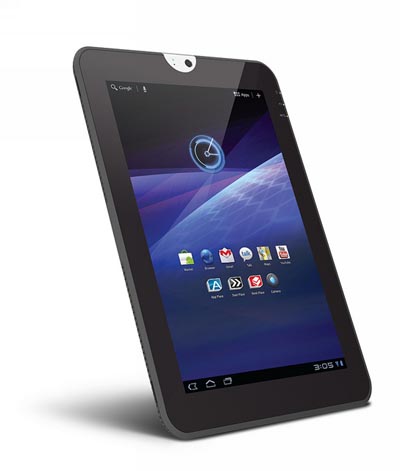Toshiba's Thrive tablet is what users want, pre-orders start June 13

Toshiba is joining the increasingly crowded tablet party in the U.S. with the Thrive, a 10.1" slate that doesn't try to replicate but better the Apple iPad by incorporating tablet users' needs in its design. But will consumers agree? I got a chance to see the Thrive in action yesterday so here are my takeaways from my meeting with Toshiba.
The tablet has a multi-touch, a high resolution widescreen display (1280x800 pixels), runs on the dual-core NVIDIA Tegra 2 CUPand and is one of the first slates to ship with Android Honeycomb (3.1). It has two stereo speakers, a front and rear cameras (2 and 5 mega pixels respectively), GPS, as well as built-in Gyroscope and Accelerometer so it is ready for mobile games that take advantage of these features. There is no 3G option for the Thrive as it only comes with built-in Wi-Fi and Bluetooth connectivity, but this could also be a plus for those who do not wish to purchase a data plan for the device.
One benefit of coming late to the game is that Toshiba is able to learn from its competitors and respond to users' concerns. One of them is the desire for an additional battery for the occasions when there is no outlet available to charge an internal one, like on particularly long travel day. That's why Toshiba opted for a removable battery that is accessible under the removable back cover.
Speaking of the back cover, it is black and has a textured, rubbery feel that is slip and scratch resistant out-of-box, so the user doesn't have to budget for a case to make the device usable (but some sort of screen protector would probably be wise). You can also opt for a different color back cover for $19.95.
Drawing on its laptop computing heritage, the Thrive also includes a few useful slots and ports that users will appreciate: one full-sized USB 2.0, one mini-USB, a HDMI connector and a SD-card reader. From what I understand, the USB port will recognize most USB devices except for a printer (the tablet does work with wireless printers according to Toshiba). Hopefully someone will create an app to fix this oversight. The HDMI connector will plug right into your HDTV so again, no need to hunt for a workaround here.
The downside to including so many ports and connectors is that the Thrive is almost twice as thick as the iPad at 0.61". That said, I must say its thickness makes it look heavier than it felt in my hands. The UI is also very basic (think: Windows Classic) so its lack of style may be a dealbreaker for some. I personally don't mind as that leaves more computing power to the tablet itself; the File Manager that displays your files according to the media they exist on (thumb drive or SD card) is a handy if not a particularly pretty interface.
An 8 GB Thrive will retail for $429.99, the 16 GB for $479.99 and the 32 GB for $579.99, which has a slight edge over the Wi-Fi only iPads (a 16 GB model costs $499, for example). With the availability of the SD card slot, you could even expand the capacity of the Thrive without having to pay for the 32 GB model.
For those who are looking for a mobile computer with the latest Android OS that requires no extra peripherals or accessories, then the Thrive could be just what consumers have been waiting for. By making the Thrive everything the iPad is not, Toshiba is actually in a better position to compete than if it tried to create a clone.
What do you think? Does the Thrive have the technologies you're looking for in your tablet?
